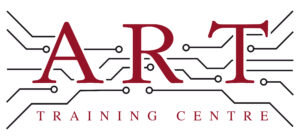Definition
Flux Pen is a tool used in electronics manufacturing that contains a liquid flux material. It is primarily used to facilitate soldering by cleaning surfaces and preventing oxidation, ensuring a strong bond between components and circuit boards. Flux pens are essential components in the soldering process, enhancing the quality of electrical connections while making the application of flux more precise and controlled.
How It’s Used in the Industry
In electronics assembly, a Flux Pen is applied by gently squeezing the pen to release a small amount of flux onto the area where soldering will occur, typically on printed circuit boards (PCBs). This step is crucial for ensuring that the solder adheres properly to the metal surfaces. After applying the flux, technicians proceed to solder components onto the PCB using various methods, such as hand soldering or reflow soldering. For both trainees and experienced professionals, understanding and using a flux pen is vital for achieving high-quality solder joints, minimising defects, and ensuring reliable electronic assemblies.
History & Origins
The Flux Pen became common in electronics manufacturing during the late 20th century, coinciding with the rise of surface mount technology (SMT) and the need for more efficient soldering processes. As electronic components became smaller and more complex, the development of flux pens provided a convenient method for applying flux precisely. Industry standards, such as those established by the IPC, further promoted the use of flux pens, ensuring consistency and quality in soldering practices across the industry.
Variations
There are several variations of Flux Pens, including those filled with different types of flux, such as rosin-based, water-soluble, or no-clean flux. Each type serves specific purposes; for instance, water-soluble flux is easier to clean after soldering, while no-clean flux can remain on the board without requiring removal. Compared to traditional flux application methods, such as using a brush or syringe, flux pens offer greater precision and ease of use, making them ideal for both beginners and seasoned technicians.
Modern Applications
Today, Flux Pens are widely used in electronics production and repair, especially in the assembly of surface mount and through-hole components. They play a critical role in ensuring the quality and reliability of solder joints, which is essential for compliance with IPC standards. Additionally, flux pens are valuable in professional training, helping learners understand the importance of proper flux application in achieving optimal soldering results and maintaining high manufacturing standards.
Practical Tips & Training
When working with a Flux Pen, it is important to apply the flux sparingly to avoid excess that can lead to soldering defects. Always inspect the area after application to ensure even coverage. Safety is paramount; ensure proper ventilation and avoid skin contact with flux. Structured training and certification in electronics can enhance understanding of flux usage, soldering techniques, and inspection methods, ultimately contributing to higher quality work in the field.


